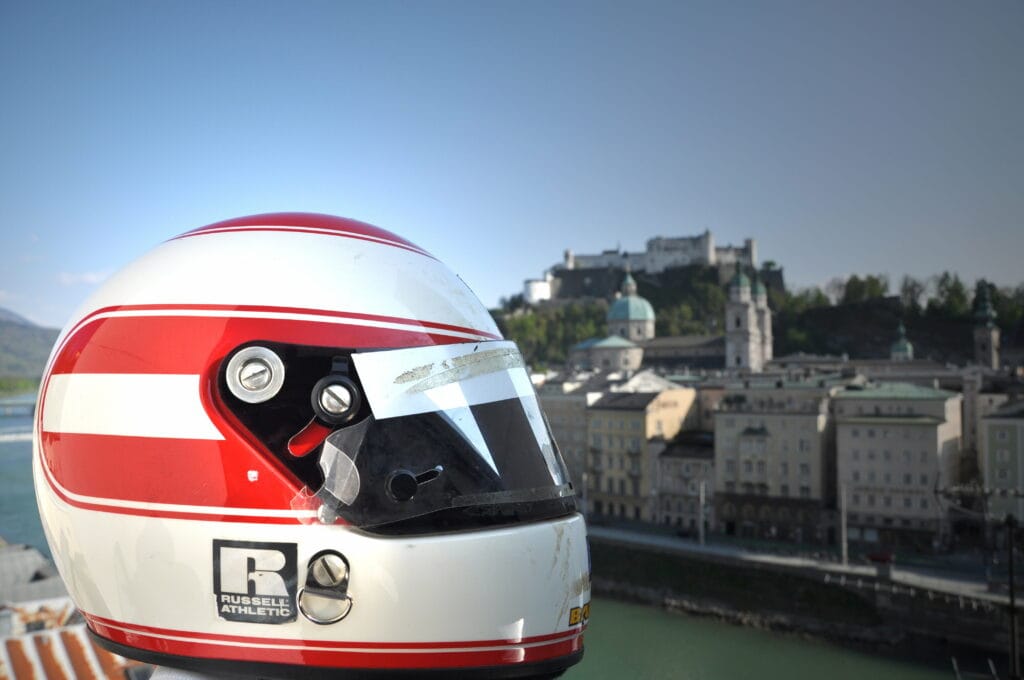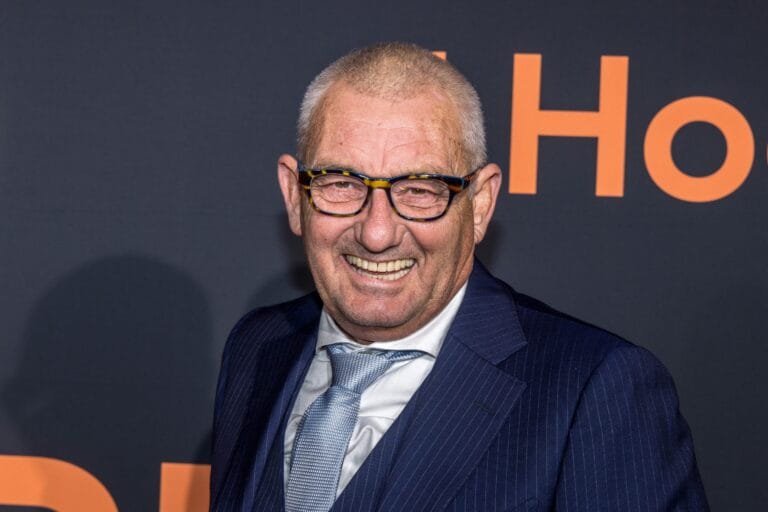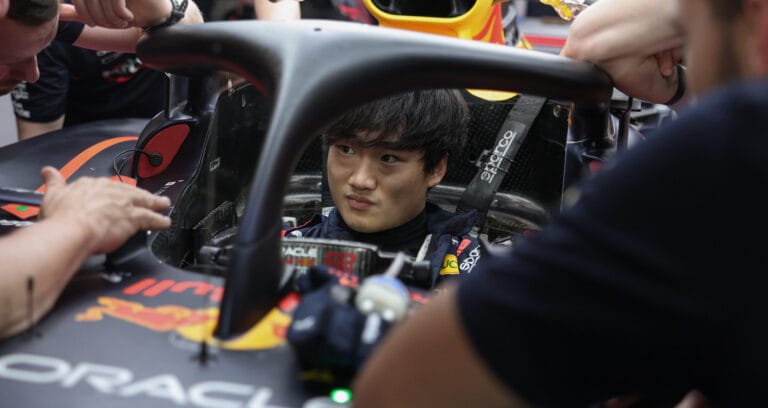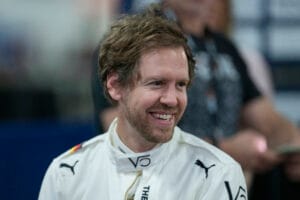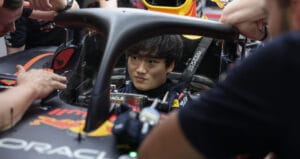Today, we commemorate the life of Formula 1 driver Roland Ratzenberger, who tragically lost his life thirty years ago during a qualifying session at the San Marino Grand Prix. This story was updated in 2019, and the information contained within is from that time.
Written/updated by: Dennis van Loenhout
Roland Ratzenberger was a late bloomer. He made his debut in Formula 1 at the age of 33, in 1994. In Aida, Japan, he finished in eleventh place. Then came Imola and the fatal crash. In a weekend overshadowed by the death of Ayrton Senna, Ratzenberger disappeared as quickly as he had arrived. His parents and friends share their memories.
In search of who Roland Ratzenberger was, I traveled to his hometown of Salzburg and met Ratzenberger’s parents, Rudolf and Margit, and his good friends Harald Manzl and Gerhard Kuntschik, both journalists. “I’ve only realized in the past few years that I miss Roland more than I ever wanted to admit,” says Manzl. Kuntschik also thinks about him almost every day. “He called me after every race. ‘Servus, Der Roland ist es’. From his voice, I could tell if he had a good race.” His parents put it simply: “Roland is always with us.”
Blissfully Happy
One thing is certain, Roland Ratzenberger was blissfully happy in 1994. He had finally become a Formula 1 driver, fulfilling a childhood dream. Few people know that Ratzenberger almost made his Formula 1 debut in 1991. Eddie Jordan was very interested, but the Japanese sponsor who was supposed to help Ratzenberger secure his much-desired seat ran into problems, causing the deal to fall through and Bertrand Gachot ended up in the Jordan. The Belgian scored points in that car. What if?
Ratzenberger’s Opportunity in 1994
Ratzenberger’s chance came only in 1994, with Simtek, the then-new team of engineer Nick Wirth. The deal was only for five races, and although Ratzenberger was aware of the shortcomings of the car, he also saw potential. “But during that fateful qualifying session in Imola, Roland was decidedly not happy,” says his mother, Margit. “He knew his car was not competitive, he wanted better. But he was in Formula 1, he had achieved what he had always dreamed of.”
‘I Will Become a Racer’
Ratzenberger was the first child of Rudolf and Margit, who later had two more daughters. “His first word was not ‘mama’, but ‘car’.” In September 1969, when Roland was nine, the Salzburgring was opened near their family home. “Roland often went to watch, but he never paid for entry. He always wriggled his small body through a hole in the fence,” Rudolf recounts. It wasn’t long before he came home with the announcement: “I will become a car racer.” His father, in particular, had a hard time with this. “I was a civil servant in pension insurance and found security very important. I wanted Roland to have a secure future, but he insisted on becoming a racer.”
Early Passion for Cars
As a young boy, he was already fascinated by cars. “His grandmother lived on a busy road, Roland would spend all day looking out the window,” his mother Margit recalls.
First Taste of Racing
Although he reluctantly pursued a higher technical education from 1975, his first taste of his own driving talents at the Erster Salzburger Kart Rennclub left him wanting more. In 1980, he attended a rally in Saalbach Hinterglemm with a friend, where Kuntschik, a motorsport journalist for the Salzburger Nachrichten, was reporting. “Two lads approached me,” Kuntschik recalls. “They said they wanted to become racers and asked how to go about it. I didn’t rate them very highly; I told them they should save up and take a look at Walter Lechner’s racing school.”
Mountain Rat
Lechner held his racing course at the Salzburgring, his workshop was located opposite Roland’s parental home. Roland started working there as a mechanic to fund his racing ambitions. Later, Ratzenberger swapped Lechner’s racing school for Jim Russell’s in Italy and became an instructor. His colleagues affectionately nicknamed him Topo di Montagna: the rat from the mountains, which later evolved into Roland the Rat.
Participation in German and European Formula Ford 1600 Championships
He participated in the German and European Formula Ford 1600 championships. During a race in Zandvoort, he suffered a hand fracture in a crash, which cost him the chance at the title. However, he had better luck in 1985. “A certain Alois Roppes asked Roland to take care of his son,” Rudolf recalls. “In return, Roppes would finance two FF1600 cars: one for his son, one for Roland. Roland won eleven races, becoming the Austrian and Central European champion.” The following year, he placed fourth in the British Formula Ford and won the unofficial world championship at the Formula Ford Festival on Brands Hatch.
Becoming a Factory Driver
In 1987, Ratzenberger drove part-time in Formula 3 and in the World Touring Car Championship. 1988 was supposed to be his breakthrough year in the British Formula 3, but crashes, bad luck, and a dwindling money flow made it a frustrating season. By early August, Ratzenberger had had enough: he focused on the British touring car championship and came into contact with Toyota. This was a decisive encounter.
From 1989, he began to reap the benefits of his relationship with Toyota. In 1989, he drove in the British Formula 3000 championship and made his debut at Le Mans alongside mentor Walter Lechner in a Porsche 962. He also competed in the Japanese Group C championship for SARD Toyota. This earned him a contract for 1990, as Toyota’s first European factory driver. Ratzenberger became a test driver and raced in the Japanese Group C championship for SARD and in the Japanese Formula 3000. He also drove in some touring car races. “Perhaps my fondest memory of Roland comes from 1991,” says Rudolf. “He had given up hope on Formula 1 when the Jordan deal fell through. Disappointed, he decided to focus entirely on Japan. That year, he won the 1000 kilometers of Suzuka with SARD Toyota. He called afterwards; I have rarely seen Roland so happy and proud.”
Ultimate Satisfaction
Ratzenberger remained loyal to SARD in 1992 and 1993. In Japan, he became a celebrated driver and, to his own surprise, his long-buried Formula 1 ambitions became a reality in 1994. This was fantastic news, but not a reason for him to dance on the table. “Roland was not an exuberant person,” says Manzl. His mother, Margit, confirms this. “We were not exuberant parents, we are down-to-earth people.” Rudolf admits hesitantly that he still struggles with this fact to this day. “I sometimes fear that I did not praise Roland enough in his life. Shortly before his death, I requested newspaper clippings from all over the world about Roland. This surprised him; he laughed at the fact that his career interested me more than I might have shown. Just as Rindt became a posthumous world champion, I only truly appreciated the enormous achievement my son made by reaching Formula 1 after his death.”
He now speaks at length about his son’s life and career. The love is evident in every word, but only now is there emotion in his voice. Roland Ratzenberger was a privileged man, with loving parents and friends. They have had to miss him since that fateful April 30, 1994, and that remains unbearably hard. Servus, Roland. Goodbye.


